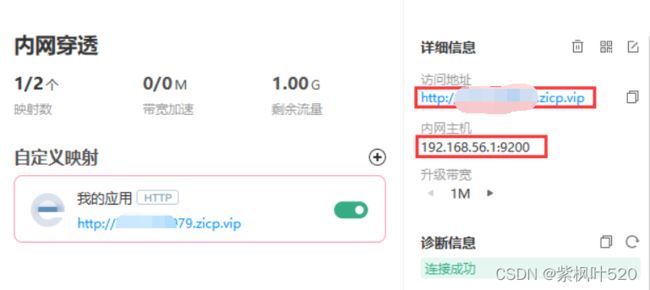对接微信公众(开放)平台,获取微信用户信息,实现第三方登录
一、主要流程
实现第三方登录,从微信获取用户信息,用微信公众平台和微信开放平台,其实流程和原理都是一样的,就是调用的接口和对应的参数有点区别。
微信公众平台 和 微信开放平台 对应的官方文档如下:
微信开放文档
准备工作 | 微信开放文档
本次用 公众平台 来测试,主要流程如下:
1、重定向微信接口,微信扫码确认
点击“微信登录”按钮,系统接口返回一个跳转地址(地址微信公众平台提供的,部分参数需要拼接,公众平台的接口只能用微信打开)如下,参数的详细介绍可以参考官网:
https://open.weixin.qq.com/connect/oauth2/authorize?appid=APPID&redirect_uri=REDIRECT_URI&response_type=code&scope=snsapi_userinfo&state=STATE#wechat_redirect
注意:
1.redirect_uri后面携带的参数是微信的回调地址,用户点击“同意”后,微信会请求这个地址,需要用 URLEncoder.encode(path,"utf-8") 进行编码
2、微信扫码确认后,调用回调接口
用手机微信访问上面返回的完整接口后,会提示是否同意登录,点击确认后,微信端会回调第一步中,接口里面设置的回调地址,即redirect_uri,并且携带code和state参数,如下:
redirect_uri?code=CODE&state=STATE
回调方法中,需要获取code以及state
注意:
1.验证当前state是否和跳转微信接口传递的state一致,来防止csrf攻击(可以不进行验证)
2.可以通过state来传递我们自己需要的参数
举例:设置的回调函数为:redirect_uri=http://www.aaa.com/getWeChatUserInfo
那么需要在后台定义一个接口,用来接受微信的回调,如下:
@RequestMapping("/getWeChatUserInfo")
public String getWeChatUserInfo(HttpServletRequest request){
//校验state
String state = request.getParameter("state");
//微信返回的code授权码
String code = request.getParameter("code");
//请求token
WeChatAccessToken token = weChatLoginService.getAccessTokenByCode(code);
//根据token获取用户信息
WeChatUserInfo userInfo = weChatLoginService.getWeixinUserInfo(token);
System.out.println(JSON.toJSONString(userInfo));
/**
* 可以在此处,根据业务需求开发自己的功能
*/
//重定向到其他页面
return "redirect:http://www.baidu.com";
}3、根据code获得微信的access_token
上一步获取code后,携带code和appId等参数,调用微信接口,获得access_token,微信接口:
https://api.weixin.qq.com/sns/oauth2/access_token?appid=APPID&secret=SECRET&code=CODE&grant_type=authorization_code
返回结果如下:
{
"access_token": "52_mgvyGIVQGJoVw-JUo-3GeCQggL5g11rtduGu9lwMOp5sZOIanEVH9rpuabAu9oo8nu89TcZszwz10eRq5DDDdoIuXZGPyfMEdcynGP1gS0U",
"expires_in": 7200,
"refresh_token": "52_K6X9KzoYPlTUem-MCH05X0KCIzikZy-UiX4XdxhSW-pUgWjlAVn8BDGTfwmQ4mk1Bdhd0-SSxmP1f5HQYecxWBdcGLa7UhFer1pvDzUs1gU",
"openid": "oGy6Y5tp9qxP5XLBvRU2OCIxFdvQ",
"scope": "snsapi_userinfo"
}4、获取到token后,再去调用微信接口,获取微信端用户的信息
https://api.weixin.qq.com/sns/userinfo?access_token=ACCESS_TOKEN&openid=OPENID
返回结果如下:
{
"openid": "oGy6Y5tp9qxP5XLBvRU2OCIxFdvQ",
"nickname": "A→枫火",
"sex": 0,
"language": "",
"city": "",
"province": "",
"country": "",
"headimgurl": "https://thirdwx.qlogo.cn/mmopen/vi_32/Q0j4TwGTfTKr27Hpfq957HPIXHoReLn1OvVXWFchNdW1UiaicBOugzz5ax7Hn8VzGceC50NRRQ02ibhA4ibFXZX3zg/132",
"privilege": []
}二、准备工作
微信公众平台提供测试账号,而开放平台必须要有开发者资质认证,所以用公众平台来测试
1、获取APPID和appsecret
上面提到的一些参数,appId和appsecret,是需要获取的,打开链接,扫码登录
微信公众平台
2、 关注公众号
公众平台,转发的请求地址,只能用手机微信打开,而访问请求,必须先关注下面的测试公众号
 3、设置微信回调域名
3、设置微信回调域名
通过:网页服务-网页帐号-网页授权获取用户基本信息,点击修改,进行回调域名的配置
设置回调函数的时候,域名必须要和这里设置的域名相同
4、设置花生壳的内网穿透
因为在设置微信回调接口的时候,微信端是要访问我们设置的回调接口的,回调接口中的域名要和第三步中设置的域名保持一致
因此使用花生壳设置内网穿透,保证手机微信在调用此域名的时候,能够访问我们电脑端上的服务
三、代码实现
1、先创建一个springboot项目,结构如下
核心的代码是:ThirdLoginWeChatController 和 WeChatLoginService,其他的都是配置和工具类
2、具体对应的代码
application.yml,配置信息,
server:
port: 9200
oauth:
weixin:
#微信公众平台的应用id
appID:
#微信公众平台的应用秘钥
appsecret:
#获取授权码的URL
authorizeUrl: https://open.weixin.qq.com/connect/oauth2/authorize
#获取令牌的URL
tokenUrl: https://api.weixin.qq.com/sns/oauth2/access_token
#获取用户信息的URL
userInfoUrl: https://api.weixin.qq.com/sns/userinfo
#回调地址的URL
backUrl: http://273mc88979.zicp.vip/wechat/getWeChatUserInfoWeChatConfig,配置类,获取并封装配置文件中的信息,包括APPID,appsecret,访问微信的接口和回调域名等
@Data
@Configuration
@ConfigurationProperties(prefix = "oauth.weixin")
public class WeChatConfig {
//微信公众平台的应用id
private String appID;
//微信公众平台的应用秘钥
private String appsecret;
//获取授权码的URL
private String authorizeUrl;
//获取令牌的URL
private String tokenUrl;
//获取用户信息的URL
private String userInfoUrl;
//回调地址的URL
private String backUrl;
}WeChatConstant,定义一些常量,主要是发送微信请求所需要的参数常量
@Data
public class WeChatConstant {
public static final String SNSAPI_USERINFO = "snsapi_userinfo";
public static final String RESPONSE_TYPE_CODE = "code";
public static final String AUTHORIZATION_CODE = "authorization_code";
//作为key,用来在redis中保存state
public static final String STATE_KEY = "state_key";
}WeChatAccessToken,实体类,封装微信返回的accesstoken
@Data
public class WeChatAccessToken {
//授权用户唯一标识
private String openid;
//接口调用凭证
private String access_token;
//用户刷新access_token
private String refresh_token;
//用户授权的作用域,使用逗号(,)分隔
private String scope;
//凭证超时时间,单位(秒)
private String expires_in;
//当且仅当该网站应用已获得该用户的userinfo授权时,才会出现该字段。
private String unionid;
}WeChatUserInfo,实体类,封装微信返回的用户信息
@Data
public class WeChatUserInfo {
//授权用户唯一标识
private String openId;
//昵称
private String nickName;
//性别,1:男,2:女,0:未知
private String sex;
//头像地址
private String headImgUrl;
//国籍
private String country;
//省
private String province;
//城市
private String city;
//语言
private String language;
//特权
private String privilege;
//关联内部用户的id
private String systemUserId;
//关联内部用户的用户名
private String systemUserName;
}ThirdLoginWeChatController,controller,对外提供的访问接口和微信回调接口
@Controller
@RequestMapping("/wechat")
public class ThirdLoginWeChatController {
@Autowired
WeChatLoginService weChatLoginService;
/**
* 点击第三方登录,使用微信登录
* 跳转到微信扫码页面
*/
@GetMapping("/toLogin")
@ResponseBody
public String login(){
//获取跳转的扫码地址
String redirectUrl = weChatLoginService.getWeixinQRUrl();
return redirectUrl;
}
/**
* 回调函数,用户扫码同意后,跳转到该接口,并携带code和state
* 1.获取code和state
* 2.通过code获取token
* 3.再根据token获取微信端的用户信息
*/
@RequestMapping("/getWeChatUserInfo")
@ResponseBody
public String getWeChatUserInfo(HttpServletRequest request){
//校验state
String state = request.getParameter("state");
//微信返回的code授权码
String code = request.getParameter("code");
System.out.println("===================code:"+request.getParameter("code"));
System.out.println("===================state:"+request.getParameter("state"));
//从redis获取state信息,与回调接受的state对比,可用于防止csrf攻击(跨站请求伪造攻击)
// String realState = redisService.getCacheObject(WeChatConstant.STATE_KEY);
// if(!state.equals(realState)){
// throw new ServiceException("微信回调地址,返回的state不一致");
// }
//请求token
WeChatAccessToken token = weChatLoginService.getAccessTokenByCode(code);
//根据token获取用户信息
WeChatUserInfo userInfo = weChatLoginService.getWeixinUserInfo(token);
System.out.println(JSON.toJSONString(userInfo));
/**
* 可以在此处,根据业务需求开发自己的功能
* 如:关联本地账户,用来实现登录逻辑
* 1.本地有账户,直接登录,返回token
* 2.本地没有账户,需要跳转页面,用户注册后绑定微信
*/
return JSON.toJSONString(userInfo);
//重定向到其他页面
//return "redirect:http://www.baidu.com";
}
}WeChatLoginService,service,用来获取token和用户信息等业务操作
@Service
public class WeChatLoginService {
@Autowired
WeChatConfig authWinxinConfig;
/**
* 获取第三方登录页面,即显示微信扫码页面的地址
*/
public String getWeixinQRUrl(){
//String redirectUrl = "https://open.weixin.qq.com/connect/oauth2/authorize?appid=APPID&redirect_uri=REDIRECT_URI&response_type=code&scope=snsapi_userinfo&state=STATE#wechat_redirect";
//处理一下回调地址
String backUrl = null;
try {
String path = authWinxinConfig.getBackUrl();
backUrl = URLEncoder.encode(path,"utf-8");
} catch (UnsupportedEncodingException e) {
e.printStackTrace();
}
//生成随机的UUID,作为state,微信平台回调本地接口时,会携带此参数,可以校验此参数,可用于防止csrf攻击(跨站请求伪造攻击)
// String state = UUID.randomUUID().toString();
// redisService.setCacheObject(WeChatConstant.STATE_KEY,state);
//拼接跳转的扫码地址
StringBuffer redirectUrl = new StringBuffer();
redirectUrl.append(authWinxinConfig.getAuthorizeUrl())
.append("?appid=").append(authWinxinConfig.getAppID())
.append("&redirect_uri=").append(backUrl)
.append("&scope=").append(WeChatConstant.SNSAPI_USERINFO)
.append("&response_type=").append(WeChatConstant.RESPONSE_TYPE_CODE)
.append("&state=").append("123")
.append("#wechat_redirect");
return redirectUrl.toString();
}
/**
* 根据code获取token和openid
*/
public WeChatAccessToken getAccessTokenByCode(String code){
//https://api.weixin.qq.com/sns/oauth2/access_token?appid=APPID&secret=SECRET&code=CODE&grant_type=authorization_code
StringBuffer tokenUrl = new StringBuffer();
tokenUrl.append(authWinxinConfig.getTokenUrl())
.append("?appid=").append(authWinxinConfig.getAppID())
.append("&secret=").append(authWinxinConfig.getAppsecret())
.append("&code=").append(code)
.append("&grant_type=").append(WeChatConstant.AUTHORIZATION_CODE);
String result = HttpUtils.get(tokenUrl.toString());
System.out.println(result);
WeChatAccessToken token = JSON.parseObject(result, WeChatAccessToken.class);
return token;
}
/**
* 根据token和openID获取用户信息
*/
public WeChatUserInfo getWeixinUserInfo(WeChatAccessToken token){
//https://api.weixin.qq.com/sns/userinfo?access_token=ACCESS_TOKEN&openid=OPENID
StringBuffer userInfoUrl = new StringBuffer();
userInfoUrl.append(authWinxinConfig.getUserInfoUrl())
.append("?access_token=").append(token.getAccess_token())
.append("&openid=").append(token.getOpenid());
String userStr = HttpUtils.get(userInfoUrl.toString());
System.out.println(userStr);
WeChatUserInfo weChartUserInfo = JSON.parseObject(userStr, WeChatUserInfo.class);
return weChartUserInfo;
}
}HttpUtils,简单的工具类,封装了HttpClient方法的实现
public class HttpUtils {
/**
* get请求返回JSONObject
* @param url
* @return
*/
public static JSONObject getJSON(String url){
String resultStr = get(url);
JSONObject res = JSONObject.parseObject(resultStr);
return res;
}
/**
* post请求返回JSONObject
* @param url
* @return
*/
public static JSONObject postJSON(String url, String jsonStr){
String resultStr = post(url, jsonStr);
JSONObject res = JSONObject.parseObject(resultStr);
return res;
}
/**
* 发送 get 请求
*
* @param url 请求地址
* @return 请求结果
*/
public static String get(String url) {
String result = null;
CloseableHttpResponse response = null;
CloseableHttpClient httpclient = HttpClients.createDefault();
try {
// 创建uri
URIBuilder builder = new URIBuilder(url);
URI uri = builder.build();
// 创建http GET请求
HttpGet httpGet = new HttpGet(uri);
// 执行请求
response = httpclient.execute(httpGet);
if (response.getStatusLine().getStatusCode() == 200) {
result = EntityUtils.toString(response.getEntity(), "UTF-8");
}
} catch (Exception e) {
e.printStackTrace();
}
return result;
}
/**
* 发送 post 请求
*
* @param url 请求地址
* @param jsonStr Form表单json字符串
* @return 请求结果
*/
public static String post(String url, String jsonStr) {
// 创建httpClient
CloseableHttpClient httpClient = HttpClients.createDefault();
// 创建post请求方式实例
HttpPost httpPost = new HttpPost(url);
// 设置请求头 发送的是json数据格式
httpPost.setHeader("Content-type", "application/json;charset=utf-8");
httpPost.setHeader("Connection", "Close");
// 设置参数---设置消息实体 也就是携带的数据
StringEntity entity = new StringEntity(jsonStr, Charset.forName("UTF-8"));
// 设置编码格式
entity.setContentEncoding("UTF-8");
// 发送Json格式的数据请求
entity.setContentType("application/json");
// 把请求消息实体塞进去
httpPost.setEntity(entity);
// 执行http的post请求
CloseableHttpResponse httpResponse;
String result = null;
try {
httpResponse = httpClient.execute(httpPost);
result = EntityUtils.toString(httpResponse.getEntity(), "UTF-8");
} catch (IOException e) {
e.printStackTrace();
}
return result;
}
} 


